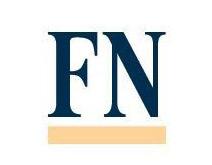
Time for a new total expense ratio?
Among the doom and gloom there is some positive news for investors: in the past year the asset-weighted total-expense ratios for exchange-traded funds in Europe declined slightly from 37 to 36 basis points.
The move to lower fees is positive as it directly affects the performance of investments.
Although the TER is the figure most commonly used to measure the annual cost of owning a fund or ETF, it does not actually represent the total all-in cost of owning a fund or ETF.
Fund fees have become increasingly important to investors, given the relatively poor performance of actively managed funds against benchmarks.
In 2011, 81% of active large cap managers underperformed the S&P 500, according to Standard and Poor’s. In Europe, Lipper found that only 26.7% of equity funds beat their benchmark in 2011.
Poor performance focuses investors on the impact of costs.
The performance metric and low-cost nature of an ETF, coupled with the lack of incentives in commission-based sales that the UK’s Retail Distribution Review and similar EU initiatives will bring, means the day of reckoning between ETFs and a section of the traditional mutual funds sector is fast approaching.
While a balanced portfolio will always have scope for alpha strategies, the trend towards beta investment by ETFs can only grow when so many alpha funds are not even beating their benchmarks.
Meaningful analysis of funds can only be through a like-for-like analysis based on cost and performance, and it is important that investors – and in particular retail investors – have sufficient information at their disposal.
The TER is the ratio of a fund’s total operating costs to its average net assets. The calculation of this ratio includes management fees, administration and distribution costs, but typically excludes transaction costs, stamp tax, payments for the use of derivatives or entry and exit commissions and other fees paid directly by the investor.
Unlike mutual funds, most ETFs impose a single fee to cover operating costs.
Assets under management also have a bearing on costs. Investors in a small traditional fund with low assets under management are likely to bear the higher costs of custody, for example.
By contrast, the promoter of an ETF will generally bear any losses on smaller funds, though he will of course benefit in administrative cost reductions on larger funds.
Factory gate pricing with no investor impacts through scale means that smaller and larger ETFs have the “same” TER.
The funds industry has called for a move to a metric that reflects the total cost of ownership for investors in funds – a metric that would include the transaction, commission and other fees excluded by the definition of TER.
This reflects the growing impact of the ETF model on transparency in the larger-funds universe and, perhaps, suggests attempts to harmonise the models, to some extent.
This would be a welcome opportunity to square a circle where promoters offer rival products in ETFs and traditional funds in the same house.
While moves to a complete cost of ownership calculation within the traditional-funds world would be clearly beneficial to the end-investor, it is not without benefit in the realm of exchange-traded exposures.
What does the exclusion of transaction costs from the TER mean for ETFs? In physically backed funds rebalancing costs are not reflected in the TER and could be high, particularly if the index methodology requires frequent rebalancing.
This could be amplified in the case of fixed-income funds or where the size of the fund means transaction costs do not benefit from large-scale transaction savings.
In synthetic funds, the swap transaction costs are similarly not disclosed in the TER and may be significant if not absorbed by the fund promoter.
The causes of tracking error in physically backed funds may be smoothed in a synthetic fund but the cost impact of that smoothing may be reflected in the swap spread charged.
In both physical and synthetic funds, the secondary market investor needs to know that the market spread charged by their broker could be significant in less-liquid or difficult-to-hedge markets or where there is only one marketmaker.
As ever, when we consider non-fund exchange-traded exposures, we are in significantly less-transparent territory and there is no requirement to publish even a TER.
While the prospectus of these instruments will require full fee disclosure, the experience of the retail investor trying to decipher a prospectus – which may be unseen by the secondary market investor – is not a happy one.
The lessons are clear.
Support for the principle of transparency suggests a move by the entire funds industry towards a complete disclosure on costs of ownership is to be welcomed, while again we must draw attention to the unhappy position of unregulated and possibly unsuitable investments being available to the unadvised retail investor.
